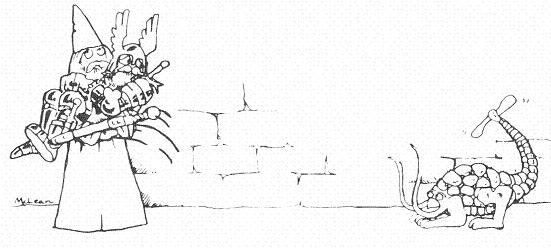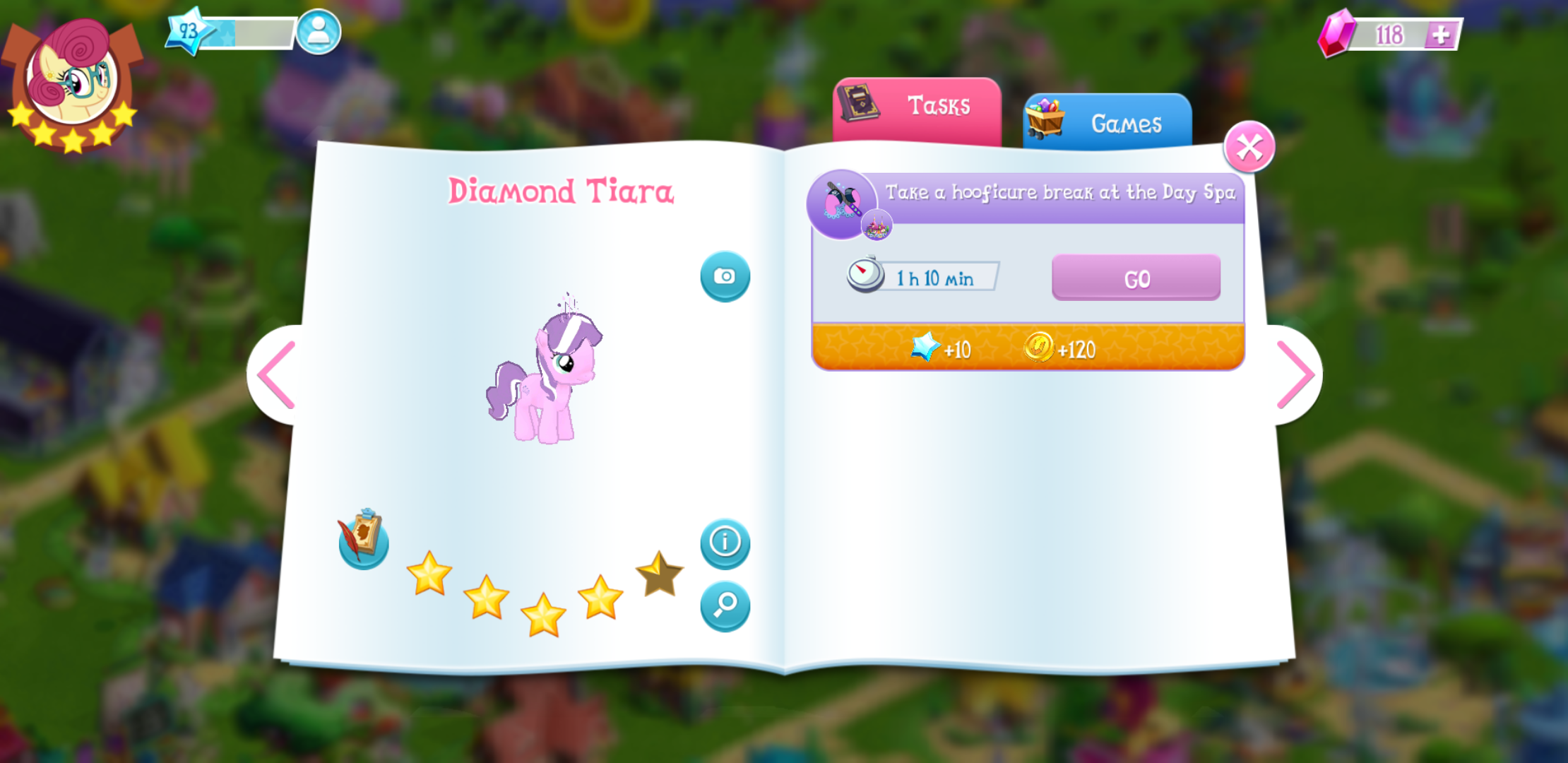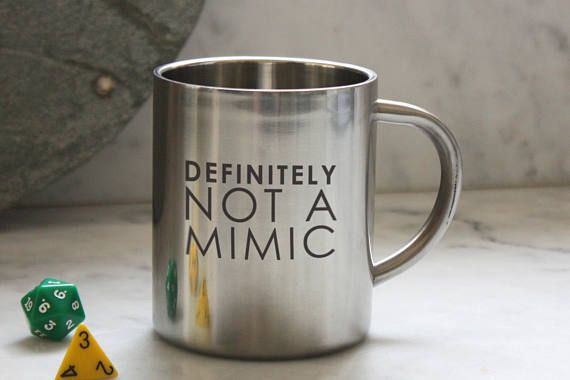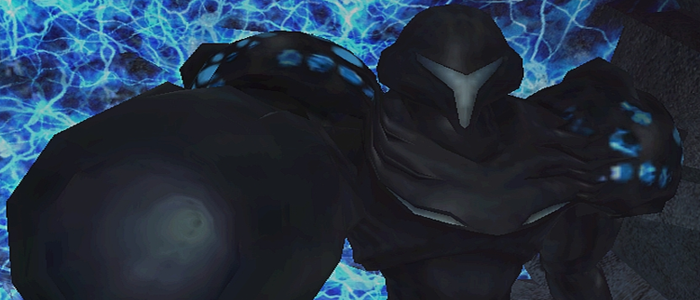Bear with me, Game Masters, today’s lesson came from playing Gameloft’s My Little Pony app game (add me if you’re playing! Friend code: ff3619e). It’s a task manager game where there is no cost to assigning a worker a task, only time to complete before they are available again for a quest or to assign a task again. There is a general idea of how much currency a minute of work is worth, but there is a huge margin that the game is OK being off.
I found myself getting annoyed at one particular worker, Diamond Tiara. When I thought about why this worker annoyed me, I discovered either brilliant synergy of flavour and design or an incredible coincidence. Inspirational either way!
Diamond Tiara is a spoiled rich filly, and usually positioned as a rival of the series main fillies, including Sweetie Belle. This rivalry plays out in the game, mechanically. Sweetie Belle has a task called Practice Her Cooking Skills at the Cider Mill that nets her 10 XP and 70 bits for 90 minutes of work. A bit below average return. Diamond Tiara, meanwhile, has a task called Take a Hooficure Break at the Day Spa that nets her 10XP and 120 bits for 70 minutes of work. A bit above average return. Sweetie Belle bits per minute rate is almost half that of Diamond Tiara. So why is Diamond Tiara the worker that annoys me?
Flavour-wise, Sweetie Belle’s task is work whereas Diamond Tiara’s is play. So on the surface it seems wrong that she makes morew bits getting a hooficure than Sweetie Belle does working. That, of course, is 100% on theme and so I fully endorse the wrongness it makes me feel. Like appreciating a wrestlers heel work, it’s a good bad.
Most tasks in the game take a multiple of 30 minutes to complete. So if I send 10 ponies on tasks simultaneously, the majority will end around the same time, or be able to repeat the task a number of times before ending at the same time as the longer tasks. That means if I want to manage my workers efficiently, I only need to log in for a minute or two every half hour. But not Diamond Tiara. She’s either 10 minutes too late or 20 minutes early, meaning I either have to give her special attention to get her working efficiently or downtime between tasks.
What’s funny about that (aside from the whole “grown man” angle) is that if I give her down time and send her on a new task with everyone else, she’s still more productive in 90 minutes than Sweetie Belle. It’s knowing that she could be even more productive that I’m reacting to. Given how well the game aligns with the franchise, I have to assume some designer chuckled aloud and muttered “this is going to frustrate players so much…”
That’s where you come in, GMs. In game design, there are show elements and there are tell elements. Show elements overlap with flavour and tell with crunch. Fireball’s flavour, for example, is the character experience while the crunch is the player experience. The character’s physical anguish is translated to the player’s concern with how few hit points they have left. That’s the typical show/tell, flavour/crunch effect. However, there are iconic scenarios that are made memorable by how they lean into the show element, when the crunch does more than just what the rules say they do.
When a rust monster walks on the scene, fighters run. When the party finds a treasure chest, they become extremely cautious. When a wizard turns invisible, the groans come out and the Perception checks come out. Rust monsters do not have fear effects, mimics do not cause a paranoid condition or invisibility the frustrated condition. These rules have a psychological layer that influences the encounters in which they appear. The crunch shows as much as the flavour.
Compare the fear the table experiences if a rust monster is present (or even hinted at; how would your players react if they find a steel trap rusted away from the inside in the first room of a dungeon?) to an encounter with a mite. These small fey can cast doom once per day, a fear effect. But do players see mites and run? Doubtful. If they fail their save against doom they’re more likely annoyed than afraid.
When a rule elicits a reaction at the table similar to what the characters experience, that’s the ideal. The game is doing our work for us. In most cases, it’s up to us to take these tell elements and find the show in them. If a player is annoyed that they’re shaken by a mite, play that up. Describe how they’re distracted by thoughts of its tiny fingers poking around in their mouths, that the shade of blue reminds them of a playground toy they once fell off of, that they’re overwhelmed by the idea that they might hurt this adorable foe.
Find the emotional layer the mechanics you are using resonate and make your encounters about that.









